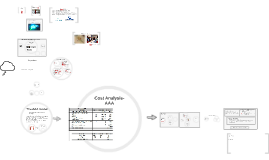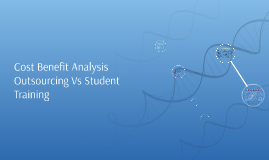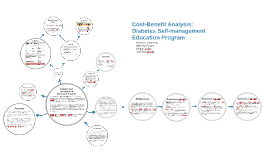Cost-Benefit Analysis:
Transcript: Healthy People 2010. (n.d.). Diabetes Retrieved fromhttp:www.healthypeople.gov/2010/document/pdf/Volume1/05Diabetes.pdf Russell, L. (2015). The science of making better decisions about health: Cost-effectiveness and cost-benefit analysis. Agency for Healthcare Research and Quality. Retrieved from http://www.ahrq.gov/professionals/education/curriculum-tools/population-health/russell.html Diabetes Self-management Education Program Boren, S. A., Fitzner, K. A., Panhalkar, P. S., & Specker, J. E. (2009). Costs and Benefit Associated With Diabetes Education: A Review of the Literature. The DiabetesEdu cator. Retrieved from https://www.diabeteseducator.org/docs/default-source/leg acy-docs/_resources/pdf/Costs_and_Benefits.pdf Externalities References Objective Function Patricia Cummings Bethany Foster Megan Kellar Caroline Stroup Rationale A cost-benefit ratio represents the revenue made for every $1.00 of cost (Penner, 2013). If the number is above $1.00, the program is profitable (Penner, 2013). For the DSME program, the cost-benefit ratio equals $1.53, meaning for every dollar spent, the implementation of the program reduces the cost of complications of diabetes by $1.53. Introduction Costs Implications What is the purpose of a cost-benefit analysis (CBA)? A CBA is used to analyze the cost of an organization to implement a program or project compared with the benefits to evaluate the worth (“Evaluating Costs”, n.d.). This can be helpful in decision making because it allows an organization to determine a project's worth. It helps determine if the benefits outweigh the costs versus programs in which the costs outweigh the benefits. This can help evaluate if the program is beneficial for the organization and will better community health (“Evaluating Costs”, n.d.). The benefits analyzed are medical, non-medical, and money costs (Russell, 2015). Evaluating costs and benefits in health care. (n.d.). Retrieved from https://www.princeton.edu/~ota/disk3/1980/8011/801104.PDF Fernandes, J. R., & Zhang, P. (2016). Cost-effectiveness and cost-saving interventions for prevention and control of diabetes. Diabetes Voice, 62(2), 16-20. Retrieved from https://www.idf.org/sites/default/files/ attachments/DV0216-fernandes-zhang.pdf Garfield, K. (n.d.). Reconsidering cost-sharing for diabetes self-management education: Recommendation for policy reform. Retrieved from https:// www.diabeteseducator.org/docs/default-source/advocacy/reconsidering -cost-sharing-for-dsme-chlpi-paths-6-11-2015-(final-draf.pdf?sfvrsn=2 Deakin, T. (2011). Diabetes education drives quality and fuels NHS efficiency savings.Primary Health Care, 21(10), 21-24. Retrieved from http://http://www.nursing-standard.co.uk/ Penner, S. J. (2013). Economics and financial management for nurses and nurse leaders (2nd ed.). New York, NY: Springer. Diabetes increases the risk of comorbidities, complicating quality of life and costing national health systems billions of dollars (Fernandes & Zhang, 2016). DSME does not guarantee lifetime effective diabetes self-care (Haas et al., 2012). Barriers may include socioeconomic or cultural factors, health insurance shortfalls, and lack of encouragement from health providers to seek diabetes education (Haas et al., 2012). Intangibles Diabetes UK. (2013). More than one in four hospital admissions for heart failureare for people with diabetes. Retrieved from https://www.diabetes.org.uk/About_us/News_Landing_Page/Mor e-than-one-in-four-hospital-ad missions-for-heart-failure-are-for-people-with-diabetes Haas, L., Maryniuk, M., Beck, J., Cox, C. E., Duker, P., Edwards, L., . . .Youssef, G. (2014). National standards for diabetes self-management education and support. Diabetes Care, 37 (Supplement_1),144-153. doi:10.2337/dc14-s144 Haas, L., Maryniuk, M., Beck, J., Cox, C. E., Duker, P., Edwards, L., . . . Youssef, G. On behalf of the 2012 Standards Revision Task Force, D. (2012). National standards for diabetes self-management education and support. Diabetes Care, 35(11), 2393-2401. doi:10.2337/dc12-1707 Norris, S. L., Engelgau, M. M., & Narayan, K. V. (2001). Effectiveness of self management training in type 2 diabetes: A systematic review of randomized controlled trials. Diabetes Care, 24(3), 561-587. doi:10.2337/diacare.24.3.561 Benefits Conclusion Benefit-Cost Ratio References Cont'd More than 100 million Americans are at risk for developing complications related to diabetes (Haas et al., 2012). Healthy People 2010 goal was to increase the number of people with diabetes that receive education from 40% to 60% (Healthy People 2010, n.d.). According to the International Diabetes Federation (2015), there have been findings that early intervention and delay or avoidance of progression to type 2 diabetes is of enormous benefit, in terms of increasing life expectancy and quality of life, and potentially in economic terms for society and healthcare payers. There are findings that show that education on self-management and changing lifestyle

















